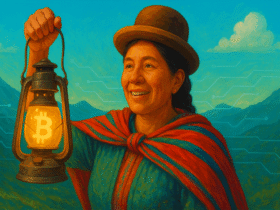From Chile they maintain that the reserves must meet high security criteria.
In this way, they differ from countries like Brazil and the United States.
In contrast to the debates currently occupying congressmen in Brazil and the United States, in Chile the idea of establishing a strategic bitcoin reserve has been categorically rejected.
The Central Bank explained that cryptocurrencies do not meet the fundamental characteristic to be part of international reserves, which consists of guaranteeing adequate levels of security against external events; Furthermore, the institution stressed that its constitutional legal framework prevents the adoption of this type of assets.
Thus, the Central Bank clarified its position in a recently published note, which was cited on the social network Jorge H. Gaticaspecialist in cryptocurrency issues.
The objective of international reserves is to maintain economic and financial stability in the face of adverse external shocks and the conduct of exchange rate policy. Therefore, they must meet high criteria of security, liquidity and quality, according to IMF definitions to guarantee central banks their immediate availability with a limited impact on the market and efficient access in case they need to be used in periods of crisis. .
Central Bank of Chile.
According to the institution, The volatility of cryptocurrencies is a key factor for them not to be part of your backup assets. Furthermore, its constitutional organic law restricts the composition of its reserves to “gold, credit titles, securities or commercial papers, and instruments issued or backed by foreign states, central banks or international financial entities.”
Currently, Chile maintains a minimum amount of gold reserves, with a balance of 0.25 tons (approximately 20 ingots) dating back to the first quarter of 2024. This figure is considerably low compared to the much larger reserves the country possessed in 1973which amounted to almost 20,000 million escudos, equivalent to approximately USD 700,000 million adjusted to current values. In contrast, current reserves represent about USD 15.7 million.
Although it is a highly valued asset, selling gold can be considerably slower compared to currencies or bonds, and transporting large quantities carries significant risks and involves high costs. In 1997, the Central Bank began to dispose of its gold reserves and by 2000 they had completed sales.
Chile’s investment portfolio is made up entirely of sovereign debt instruments, with an average duration of 3 years. 20% of these instruments are adjusted for inflation. Regarding the distribution by country, 77% of the debt is from the United States, 8% from China, 5% from countries in the euro zone, 4% from the United Kingdom, 3% from South Korea and 3% of Australia. This according to data from Central Bank.
While Chile categorically rules out the integration of bitcoin as part of its strategic reserves, In the United States the panorama points towards a radical change. During his campaign, President-elect Donald Trump promised the creation of a reserve based on the leading cryptocurrency, a measure that he must fulfill if he wants to retain the trust of many of his voters; It is also important to note that Trump’s transition team is currently working on creating a new position in the White House, aimed at coordinating cryptocurrency-related policies between federal agencies. This was reported by CriptoNoticias.
It remains to be seen whether Trump will fulfill his promise, but his proposal has already resonated in several locations in the United States. Dennis Porter, CEO of the Satoshi Action Fund (SAF), recently proposed that Texas follow the same path, while similar steps are being taken in Pennsylvania and Florida: they not only seek to protect themselves against inflation, but also legitimize the use of bitcoin to government level.
Finally, in Brazil it was the deputy Eros Biondini who presented the project for the creation of the RESBit reserve. This initiative aims to diversify the assets of the National Treasury and protect the country’s international reserves against exchange fluctuations and geopolitical risks, through a gradual acquisition of bitcoin with a limit of up to 5% of the reserves.






Leave a Reply